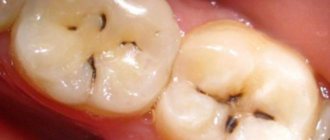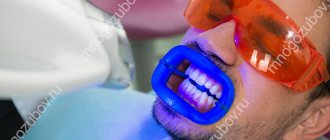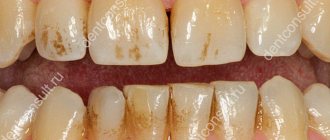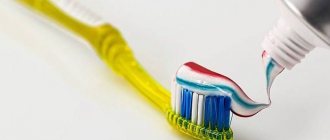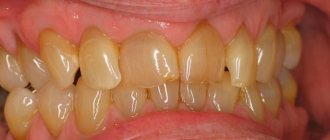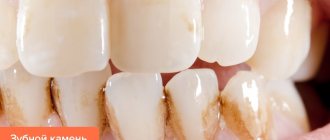Dentists consider activated charcoal to be the most suitable means for teeth whitening at home. It has been known for a long time and has managed to establish itself as a safe, economical and effective remedy. Activated carbon tablets can be found at any pharmacy and are inexpensive.
Article on the topic Crown with Putin, fangs like a vampire. Doctor about new trends in dental fashion
Unlike other popular non-professional remedies, such as soda or hydrogen peroxide, activated carbon does not lead to negative consequences such as inflammation of the gums or thinning of tooth enamel. Coal has virtually no taste or smell, so its use will not cause any unpleasant sensations, even if you accidentally swallow it.
The only drawback of this cleaning method is that the enamel of the teeth and gums may turn black for a short time, so it is not recommended to carry out such procedures immediately before leaving the house.
Also, using this product does not mean that you should refuse professional cleaning at the dentist - charcoal may cope with plaque, but it will not help get rid of tartar.
Question answer
Why is activated carbon called this?
Does activated charcoal really whiten teeth?
Due to its structure, activated carbon powder is an excellent abrasive.
Activated carbon powder has the unique ability to absorb impressive volumes of liquid along with the toxins it contains.
Coal has another unique property.
Due to its structure, activated carbon powder is an excellent abrasive, soft and at the same time allows you to remove plaque and make the enamel several tones lighter.
The coal particles are so small that there is virtually no risk of damaging enamel and gums.
Of course, it will not be possible to achieve a salon effect, and after a couple of sessions of such home whitening, your teeth will become only two or three shades lighter, but the result will be obvious to everyone who sees your smile.
In addition, the cost of a package of activated carbon is so low that it is worth experimenting with this safe product, which can be safely used at home.
Main contraindications
Among the contraindications that exist for the procedure are the following:
- The procedure is not recommended if you are allergic to the product.
- You should not perform activated carbon bleaching on children under 14 years of age, as their enamel is still too thin and delicate.
- It is not recommended for people with sensitive and thinned enamel.
- Those who wear braces or have recently had them removed should not lighten the enamel using this method. Such an intervention can be critical for teeth and cause their destruction. For several months after braces are removed, teeth need to be strengthened.
Stotik Vitaly
dentist-therapist
Cleaning should be carried out no more than 1 course per month. In this case, the lightening of the enamel must be combined with its strengthening. It is impossible to carry out manipulations every day; this can make the enamel weak and fragile.
Side effects include the fact that small particles of coal can damage the enamel structure. This will lead to increased sensitivity of the oral cavity when consuming cold and hot food and drinks.
Indications for the procedure
Abrasive particles of coal will gently remove the yellowish coating that annoys lovers of tonic drinks and tobacco.
Teeth whitening with activated carbon is a procedure that is ideal for people with naturally quite light enamel.
After all, charcoal cannot affect the shade of teeth: it will only remove plaque, which visually makes teeth darker.
If you have dark enamel, you won't be able to make it white at home.
Coal will help people who drink strong tea or coffee every day, and also smoke a lot. Abrasive particles of coal will gently remove the yellowish coating that annoys lovers of tonic drinks and tobacco.
Teeth whitening with activated carbon is worth paying attention to if you regularly visit a dental clinic and undergo professional teeth cleaning.
Regular use of charcoal will help increase the time between visits to the dentist and maintain the results achieved by the specialist.
Advice! If after cleansing your teeth with charcoal you notice black dots and streaks, it means your enamel is damaged and the method described in the article is not suitable for you. Contact your dentist: modern methods of strengthening teeth help restore the integrity of the enamel and avoid the development of caries.
Useful properties and effectiveness
The bleaching properties of coal have been known since ancient times. Our ancestors used charcoal, crushed in a mortar, for teeth. But only wealthy people could afford such a procedure. Therefore, snow-white teeth were a sign of nobility and wealth. Activated carbon was invented later. It contains organic compounds that can affect tooth enamel. It was noticed that when charcoal is applied to the teeth, it absorbs all the particles of plaque deposited on the enamel. These are pigments from coffee, tea, wine, and coloring products.
Activated carbon acts as an abrasive, cleaning the surface of the teeth. They become lighter. You should not expect your teeth to acquire a shade noticeably lighter than their natural shade. This can only be achieved by professional cleaning. After using charcoal, some areas may remain the same as before due to the fact that it is difficult to reach them using homemade means (the space between the teeth, the peri-gingival area).
Preparing teeth for whitening
Activated carbon is a product that can practically not harm teeth.
However, to protect yourself from possible negative consequences, you should adhere to the following recommendations:
- If the enamel of your teeth is thinned, it is better to avoid whitening.
Consult your dentist before proceeding with the procedure. A specialist will be able to assess the condition of your teeth and assess possible risks;
- If the enamel of your teeth is thinned, it is better to avoid whitening. Despite its mild effect, coal powder can have a destructive effect on thin enamel;
- If you have recently had your braces removed, you may want to avoid any methods of teeth whitening;
- A week before whitening, brush your teeth with a professional paste that strengthens tooth enamel. Your dentist can recommend such a paste. Thanks to such preparation, the enamel will become stronger, which means that after cleaning with charcoal, microcracks will not appear on it.
Important! Try to crush the tablets to such an extent that no large particles remain in the powder. This will help avoid damage to the enamel.
Recipes
For each method you will need 1-2 charcoal tablets.
Choose the method that seems most convenient to you and feel free to start cleaning:
- Brush your teeth with a charcoal abrasive paste for two to three minutes
"Coal" paste. Grind the tablet. Mix the resulting powder with the paste required for one-time brushing of teeth. Apply the resulting mixture to a medium-hard toothbrush and brush your teeth thoroughly for three minutes. If you want more visible results, use an electric toothbrush with enamel that matches your tooth type.
- Chewing coal. If you don't want to spend a lot of time whitening your teeth, this method will suit you best. Simply chew a couple of activated charcoal tablets thoroughly for one minute. After this, rinse your mouth with water or mouthwash.
- Coal powder. Grind two or three charcoal tablets. Dilute the powder with water: it is necessary that the resulting mixture resembles toothpaste in consistency. The most convenient way is to add water drop by drop from a soft pipette, which can be purchased at any pharmacy. Brush your teeth with a charcoal abrasive paste for two to three minutes. After completing the procedure, rinse your mouth with water.
Important! If you have sensitive teeth and thin enamel, apply the mixture to your finger rather than to your toothbrush when brushing. This will reduce the abrasive qualities of the powder and help protect the enamel from microcracks.
Stages of teeth whitening with activated carbon at home
In-office bleaching
This term in dentistry means teeth whitening under the supervision of a doctor using gels based on hydrogen peroxide or urea, as well as catalysts in the form of ultraviolet light or a laser beam. The chemical composition affects only 20% of the organic substances contained in hard dental tissue (dentine) and does not cause any harm to the teeth. The final result of the procedure depends on the initial shade of the teeth, determined according to the VITA scale. In most cases, it is possible to achieve a lightening of 5 to 10 tones. Let's look at the features of each type of teeth whitening in the clinic.
Photobleaching
During photo-whitening, the whitening gel is applied to the tooth surface from the front. The action of the product is accelerated by a lamp with ultraviolet radiation. One session lasts 15 – 30 minutes. The maximum change in tooth shade is possible by 8 – 10 tones. The cost of the service is about 10,000 rubles.
Laser whitening
The reagent on the teeth is catalyzed by a laser beam rather than an ultraviolet lamp. Each tooth is processed separately. In one laser whitening procedure, you can improve your color by 12 shades. The price of an effective technique is proportionally high - from 20,000 rubles per session.
Chemical bleaching
In chemical whitening, a whitening gel is applied to the surface of the teeth, and no ultraviolet light or laser is used. The method is gentle, so teeth become whiter by only 5 to 7 tones. The cost of the procedure is about 12,000 rubles.
In-canal whitening
It is used when the tooth has darkened due to filling the canals with coloring materials. The dentist drills a hole in the tooth cavity, applies a brightening agent and places a temporary filling. After achieving the desired result, the final restoration of the tooth is carried out. Endo-whitening costs approximately 1,000 rubles per tooth.
Contrary to what many patients believe, the popular Air Flow procedure involves mechanical cleaning and not teeth whitening. A powerful stream of air, water, soda and other components removes bacterial and hard plaque, polishing and leveling the tooth surface. After the session, the teeth visually become whiter because they have been cleaned of impurities and returned to their natural color. The same can be said about ultrasonic whitening.
Traditional methods
If you want to not only whiten your teeth, but also strengthen your gums and enamel, then you should pay attention to folk recipes:
- You can get a mild whitening agent by mixing charcoal powder with honey.
Mix the powder obtained after grinding the tablets with a decoction of oak bark. Oak bark contains tannins, which strengthen the gums and help cope with their bleeding;
- Add two to three drops of lemon juice to the paste with the addition of activated carbon powder. Essential oils contained in lemon juice additionally whiten teeth and destroy bacteria that cause caries. This method is suitable only for people whose enamel is not damaged and who do not have carious cavities;
- You can get a mild bleaching agent by mixing charcoal powder with honey. Honey will be beneficial by strengthening the soft tissue of the gums and will also reduce tooth sensitivity.
Advice! If you use a toothbrush that is too hard or don't grind the charcoal enough, your gums may bleed after brushing your teeth. In this case, you should rinse your mouth with a glass of water to which a tablespoon of hydrogen peroxide has been added. Peroxide will help quickly stop bleeding and avoid inflammation.
How not to damage the enamel?
To avoid damaging tooth enamel, you should adhere to the following recommendations:
- Brushing your teeth with charcoal too often is harmful: it can lead to thinning of the enamel.
There should be 7 to 10 days between procedures. Brushing your teeth with charcoal too often is harmful: it can lead to thinning of the enamel;
- If, after brushing, you notice yellowish stains on your teeth or, on the contrary, that stand out against the background of the teeth with their light shade, stop home whitening for a while and consult a dentist;
- Coal powder should be as fine as possible;
- Eat hard fruits, such as apples, every day. This will help strengthen your teeth and gums;
- Use a soft or medium-hard brush. If your enamel is sensitive, apply charcoal powder using gauze or your finger.
Important! Charcoal powder can become lodged in the spaces between teeth. Thorough rinsing or flossing will help remove it.
How to maintain the effect?
The following recommendations will help you maintain the whitening effect for a long time:
- Eat apples or fresh carrots every day. These products help mechanically clean tooth enamel and remove plaque;
- Don't drink more than a couple of cups of strong tea and coffee a day. If you can’t imagine your life without these drinks, try drinking them through a straw: thanks to this, less plaque is deposited on the enamel;
- Brush your teeth thoroughly in the morning and evening, trying to get even to hard-to-reach places. It is important to brush your teeth correctly. Your dentist can teach you how to do this;
- After eating, chew chewing gum for two to three minutes.
The effectiveness of using charcoal for enamel whitening
This remedy is very simple and affordable , unlike the methods used in professional dentistry.
Moreover, many note its no less effectiveness.
This method especially appreciated by people who often drink coffee, strong tea, red wine or smokers.
All of these products leave a residue on the enamel that makes the teeth darker, unlike approved post-whitening products.
And activated carbon, when used regularly, can neutralize the effect of these products.
Advantages and disadvantages
The main advantages of the described method include the following:
- Teeth will not become whiter than their natural shade: charcoal will only remove plaque and return the enamel to its natural color
simplicity and safety of the method;
- availability of activated carbon at cost;
- harmless to the body and no side effects;
- quick results that become noticeable after the first use of charcoal powder.
However, activated carbon also has some disadvantages:
- Abrasive particles can harm the enamel, especially if it is already thinned;
- It will not be possible to achieve a salon effect. Teeth will not become whiter than their natural shade: charcoal will only remove plaque and return the enamel to its natural color;
- Old tartar cannot be removed with charcoal. To do this you will have to resort to the services of a professional.
Is it possible to replace toothpaste with activated charcoal?
The toothpaste does not contain abrasive particles that could injure the enamel.
A reasonable question arises: is it possible to replace toothpaste with activated carbon?
Dentists do not advise doing this. This is due to the fact that the toothpaste does not contain abrasive particles that could injure the enamel.
Coal, when used frequently, can cause thinning of the enamel.
And thinned enamel is the cause of tooth hypersensitivity and caries.
Therefore, it is not advisable to carry out the procedure more than once a week, and the rest of the time, to maintain the result, you should use a whitening or strengthening toothpaste.
Reviews
Elena: “Once in my youth I had a white smile that was the envy of everyone. Then I started smoking and drinking coffee every day... As a result, I was even embarrassed to smile. I found a recipe for teeth whitening with charcoal and decided to try it. I just chewed the pills every 10 days. I can say that the enamel really became whiter; my colleagues even asked if I had my teeth whitened at the dentist. Of course, there is no perfect whiteness, but the result is excellent, especially considering the cost of coal.”
Igor: “My wife said that my teeth are terribly yellow. I have been afraid of dentists since childhood, so I agreed only to home methods. My wife told me to use activated carbon powder instead of paste once a week. The result was not particularly encouraging. No, the teeth have become lighter, but the smile is not Hollywood. But I’ve always had dark enamel, so apparently I’ll have to make an appointment with the dentist.”
Alena: “After professional cleaning, the dentist advised me to chew a charcoal tablet once a week to maintain the result. It works. Previously, I went for cleaning once every four months, now between procedures it takes from 6 to 8 months. I’m happy, the savings are significant, and my teeth are white.”
Anton: “As a dentist, I am well aware that activated carbon was used to whiten enamel by our great-grandmothers. I can say that the method really works, although only if your enamel is strong enough. Otherwise, cracks will appear on it, which means the risk of caries increases. Don’t get carried away with home procedures, even the most harmless ones at first glance, and then your teeth will be healthy and beautiful.”
Dentists' opinion
Experts do not deny the effectiveness of using activated carbon to lighten enamel. At the same time, they do not consider this technique absolutely safe for oral health.
However, no whitening method guarantees only positive results.
Based on practice, dentists claim that there are only a few people who, before experimenting with the sorbent, consulted a specialist about their condition of the hard tissues of the oral cavity.
Quite a strong abrasive - activated carbon can thin out weakened enamel and create serious problems.
However, experts agree that using a sorbent for teeth whitening is a safer method compared to using hydrogen peroxide, citric acid, and soda for the same purposes.
In this regard, dentists allow enamel lightening with compressed charcoal for those who want to get rid of dark plaque, but who are not able to carry out a professional procedure.
The video explains in detail how to use the tablets correctly.
